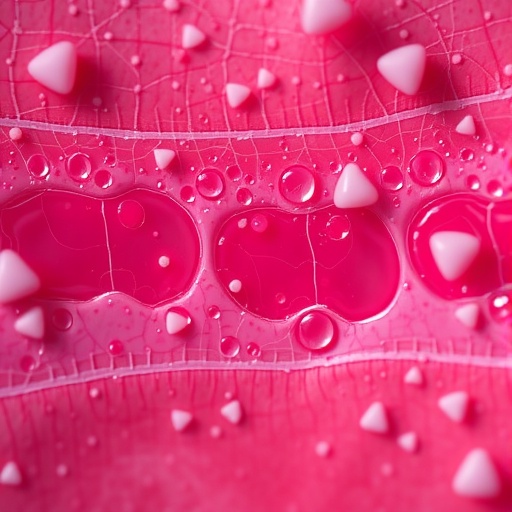Recent groundbreaking research reveals a fascinating new approach to combat age-related deterioration of skin capillaries by reversing the decline of resident dermal macrophages. Scientists have now demonstrated that local replenishment of these macrophages can rejuvenate capillary repair and tissue reperfusion in aged mice, shedding light on potential therapeutic avenues for vascular ageing in humans.
The study addresses a major challenge in vascular biology: while tissue-resident macrophages, specifically capillary-associated macrophages (CAMs), are known to decline in density with age, the mechanisms limiting their renewal and the implications for vascular health remained unclear. Notably, the researchers found that intrinsic homeostatic proliferation of CAMs fails to maintain a stable macrophage population in older skin tissue, leading to impaired capillary function.
Intriguingly, the team discovered that extrinsic environmental stimuli such as substantial tissue injury can induce a long-lasting increase in CAM density beneath the damaged regions. This was evidenced by targeted laser-induced epidermal injury causing a marked rise in CAMs, which in turn significantly improved the efficiency of capillary repair after subsequent clotting events. These findings suggest that environmental cues can override age-associated decline in macrophage populations, promoting vascular regeneration.
Building upon this insight, the researchers explored whether it was possible to stimulate CAM expansion without inflicting local tissue damage, which would be more clinically feasible. They utilized a fusion protein composed of colony-stimulating factor 1 (CSF1) linked to the Fc region of porcine IgG (CSF1–Fc), a molecule previously shown to robustly increase macrophage numbers in various tissues, including skin. The approach involved daily intradermal injections of CSF1–Fc into one hind paw of aged mice, with the contralateral paw receiving a PBS control.
Remarkably, CSF1–Fc treatment produced a significant increase in CAM density compared to control paws, which showed no change in macrophage numbers. This local expansion of dermal macrophages was measured and quantified using high-resolution imaging techniques, clearly demonstrating CSF1’s efficacy in restoring macrophage populations within aged skin. Furthermore, this effect was attributable primarily to the proliferation of existing resident CAMs, rather than the recruitment of new macrophages derived from circulating bone marrow monocytes.
To confirm the origin of replenishing macrophages, researchers employed bone marrow chimeric mice engineered to distinctly label resident versus recruited macrophage populations. They observed that CSF1 treatment did not alter the ratio of resident to recruited macrophages, strongly indicating that the observed increase arises from endogenous CAM proliferation. This distinction is crucial because it establishes the potential for targeted therapies to boost the activity of native immune cells, circumventing systemic monocyte recruitment and associated inflammatory risks.
Beyond cellular renewal, the CSF1-driven increase in CAM density translated to a marked improvement in capillary blood flow within the treated tissue. Comparison of microvascular segments revealed fewer instances of red blood cell obstruction in regions receiving CSF1, indicating enhanced vascular function. This enhancement is vital since impaired capillary perfusion underlies many age-related diseases and tissue degeneration.
Further tests involved laser-induced vessel clotting to mimic vascular injury, enabling the team to monitor capillary repair dynamics. Mice subjected to CSF1 therapy exhibited significantly accelerated reperfusion times and more efficient repair of damaged capillaries than PBS-treated controls. This compelling evidence suggests that restoring macrophage populations is not only feasible but directly beneficial for reversing ageing-related vascular impairments.
These discoveries introduce a paradigm shift in our understanding of vascular ageing, highlighting the role of niche-specific macrophage depletion as a driver of diminished capillary resilience. The research positions dermal macrophages as critical gatekeepers of microvascular health whose loss precipitates functional deterioration but whose restoration can be harnessed therapeutically.
The implications extend beyond skin biology, as vascular ageing is a systemic process contributing to myriad pathologies including chronic wounds, ischemic diseases, and age-associated organ dysfunction. By demonstrating that macrophage density can be selectively and sustainably enhanced in vivo to rejuvenate capillary repair, this study opens avenues for developing macrophage-targeted interventions for broader clinical application.
Moreover, the use of CSF1–Fc as a local therapeutic agent shows promise due to its capacity to stimulate endogenous macrophages without necessitating invasive procedures or systemic immune modulation. Future research will be crucial to optimize dosing strategies, assess long-term effects, and explore potential synergy with other regenerative therapies.
This work exemplifies how dissecting the interactions between immune cells and their vascular niches can yield innovative strategies to counteract the deleterious effects of ageing. By shifting focus from purely endothelial or systemic targets to resident macrophages, it expands the toolkit available for vascular regeneration and rejuvenation.
In conclusion, the study elegantly demonstrates that local macrophage depletion in ageing skin is not an irreversible fate. Through either environmental stimuli or CSF1-mediated proliferation, restoring dermal macrophage density significantly rejuvenates capillary function and repair capacity. Such insights offer hope for translating macrophage-centered therapies into the clinic, ultimately improving tissue health and reducing age-related morbidity.
The research paves the way for a future where harnessing the plasticity and regenerative potential of resident immune cells can mitigate vascular ageing, promoting healthier skin and systemic resilience with advancing years. The potential to reverse microvascular decline fundamentally challenges prevailing notions of irreversible ageing, heralding a new frontier in regenerative medicine.
Subject of Research: Age-related decline of dermal macrophages in skin capillaries and its impact on vascular ageing and repair.
Article Title: Niche-specific dermal macrophage loss promotes skin capillary ageing.
Article References:
Mesa, K.R., O’Connor, K.A., Ng, C. et al. Niche-specific dermal macrophage loss promotes skin capillary ageing. Nature (2025). https://doi.org/10.1038/s41586-025-09639-y
Image Credits: AI Generated




